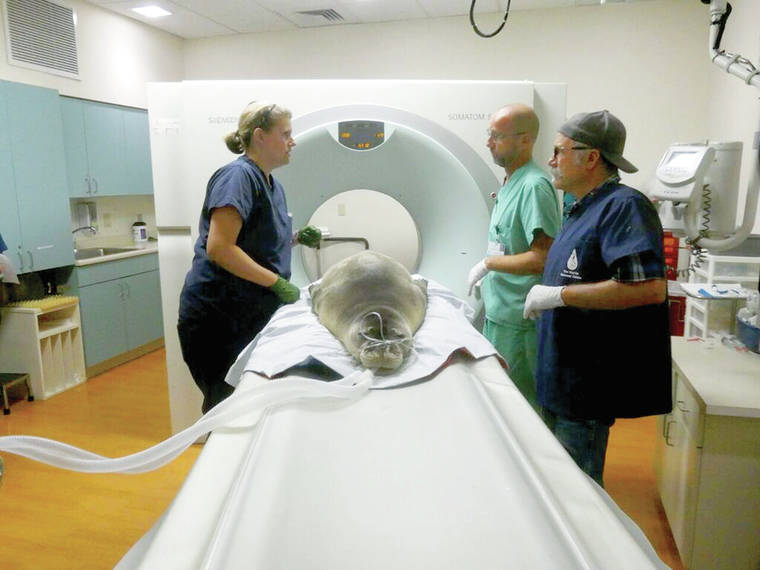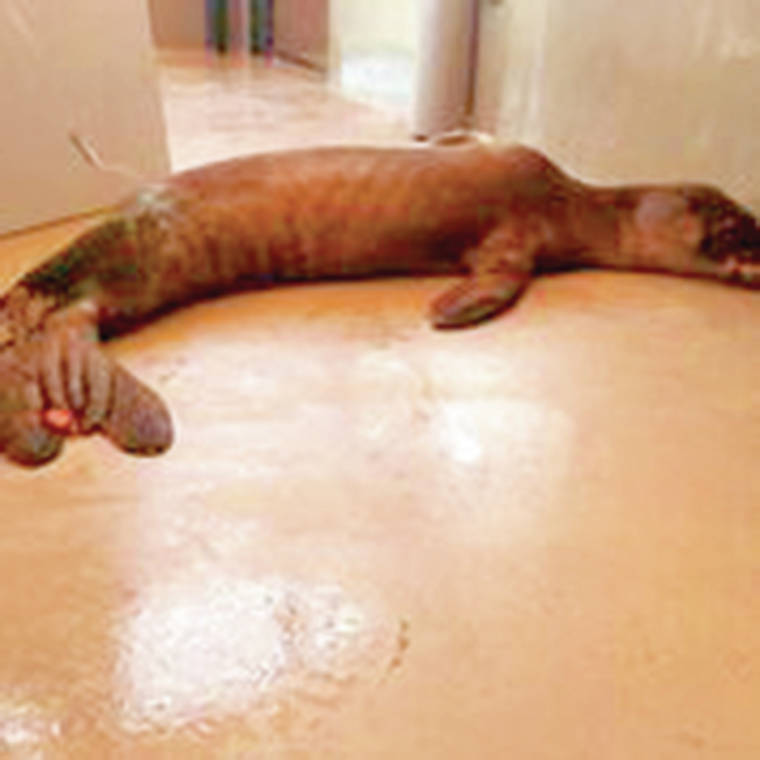LIHUE — Endangered Hawaiian monk seal RH38 is back at the Hawaii Island seal hospital in stable, but critical condition about two years after being released back into the wild.
“We’re incredibly concerned by RH38’s case as every individual is critical to this endangered population,” says Dr. Michelle Barbieri, a veterinarian with the Hawaiian Monk Seal Research Program. “We are committed to finding the cause of her illness and are using world-class expertise and medical techniques to keep RH38 alive and get her back to the wild.”
As part of her treatment, RH38 became the first wild Hawaiian monk seal ever to be put through a CT scan, with the scan done over her whole body to help further show the condition of her organ systems. The veterinarian team says they hope the results will help determine any underlying causes of her illness.
RH38 first landed at The Marine Mammal Center’s Ke Kai Ola Seal Hospital in August of 2017 for treatment of malnutrition and a heavy parasite load. The young female was treated for three months and released back into the wild on Kauai.
The Kauai Hawaiian Monk Seal Conservation Hui monitored RH38, routinely reporting she was in good condition until March, when she began to rapidly lose body condition, according to The Marine Mammal Center.
So, on March 12, she was transported via U.S. Coast Guard flight to Ke Kai Ola from Kauai, with signs of weakness, infection, broad-scale inflammation and malnutrition. Her current condition appears to be unrelated to her original admit, according to Claire Simeone, The Marine Mammal Center’s hospital director at the Kona hospital, Ke Kai Ola and her team.
Veterinarians are still determining the cause of her symptoms, but have tested for dozens of diseases, toxins and parasites. They did not find evidence of toxoplasmosis, leptospirosis, morbillivirus, or influenza, trauma, or poison, though they are not ruling anything out.
The illness doesn’t seem to be a threat to the larger population, either, though the marine mammal response team is continuing to monitor Kauai’s population, according to National Oceanic and Atmospheric Administration.
“No additional sick or malnourished monk seals have been detected across the main Hawaiian Islands,” said Barbieri. “We do not currently have any reason to believe that what is affecting RH38 is contagious to the rest of the population.”
The Marine Mammal Center has rehabilitated 27 monk seals since opening Ke Kai Ola in 2014, the majority of which were rescued from and returned to the Northwestern Hawaiian Islands.
RH38 is one of two Kauai seals that have been taken to Ke Kai Ola. The second was male pup RK58, the son of the famous monk seal RH58 (Rocky).
NOAA researchers estimate the monk seal population to be about 1,400, and about 30 percent of those monk seals are alive today due to conservation efforts led by NOAA and its partners.
•••
Jessica Else, environment reporter, can be reached at 245-0452 or at jelse@thegardenisland.com




You know you’re living in the right place when the number two story is about efforts to save an endangered seal.